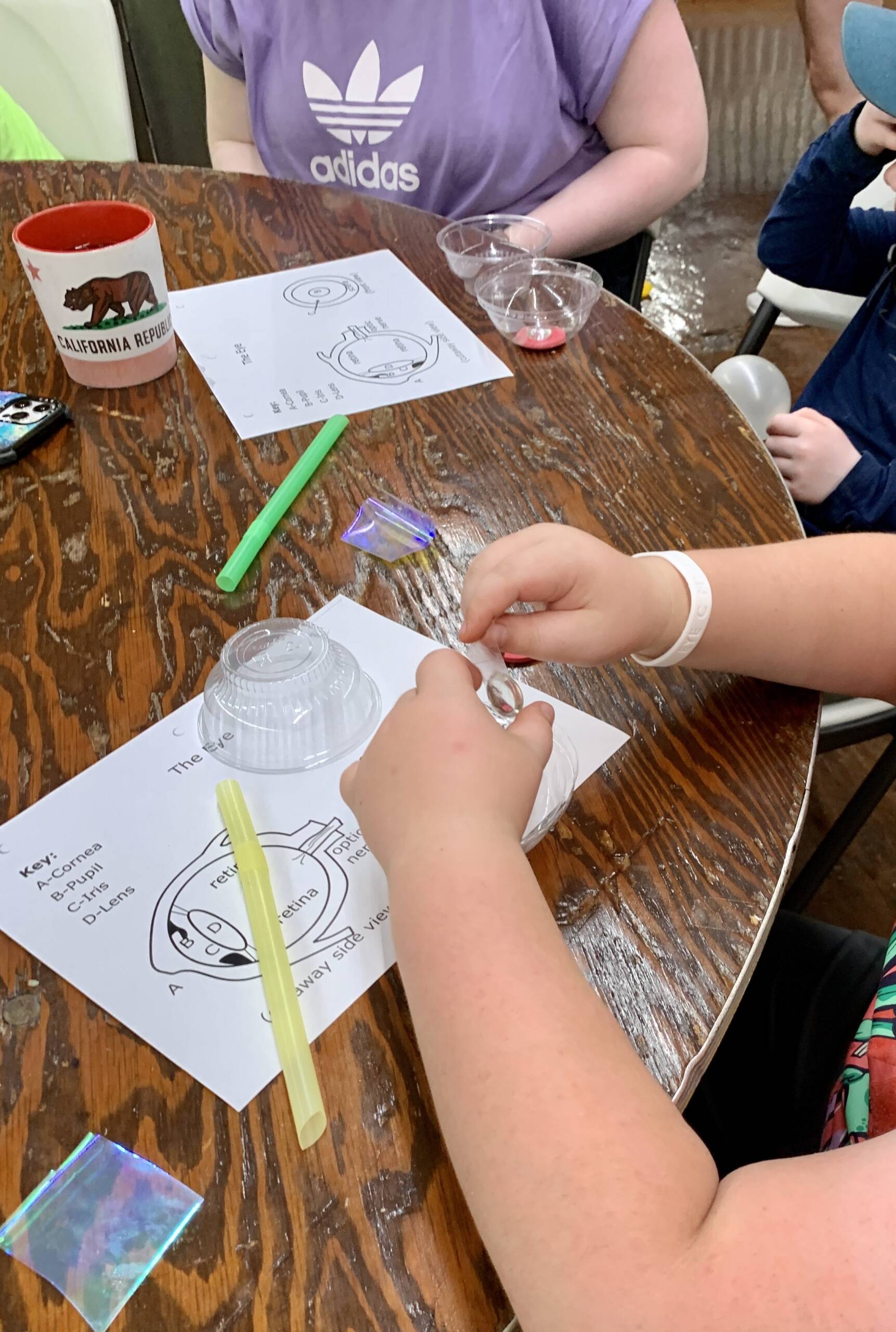This fun activity can serve as an informal assessment to other eye activities you have done with students. It can also be used as an introduction for an eye anatomy unit.
Materials

- 1 Mini Plastic Dessert Cup w/ Lid
- 1 Foam Disk Shooter
- 1 Clear, Flat Marble
- 1 Clear Balloon (5 inch in size)
- 1 Piece of Red Cellophane
- 1 Flexible Straw
- Tape or Hot Glue
- Eye Diagram
Procedure
- Provide a copy of the eye diagram document in an accessible format to each student.
- Review the parts of the eye you have discussed during previous lessons, especially the retina, optic nerve, lens, iris, and pupil.
- Provide one of each item to the student along with access to hot glue and/or tape.
- Tell the students that they will use each item to construct a model of the eye. The items given will represent the globe, retina, optic nerve, pupil, vitreous, lens, and the iris.
- Give the students time to construct the model as they think is appropriate, using the dessert cup as the method for keeping it all contained.
- Here is a guide for each item:
- Dessert Cup – Globe
- Straw – Optic Nerve
- Red Cellophane – Retina (A small piece is sufficient.)
- Balloon – Vitreous
- Flat Marble – Lens
- Foam Disk – Iris and Pupil (Remind students that the pupil is actually a HOLE, not something you can touch.)
- Discuss the finished product and make any necessary adjustments to student understanding.

Variations & Extensions
- Add two different textures to the retina to represent the rods and cones.
- Attach rubber bands to represent the eye muscles and have students partner up to practice “moving” the eye.
- Encourage students to work as a team to support one another and scaffold teaching.
- Research your student’s eye condition with them, and discuss which parts of their eyes are not working properly. Relate this information back to the items used in the model.
- Ask the student if he/she can think of any other objects to use on the eyeball to represent different parts.
- This activity can also be used as an engaging introduction to other eye activities, BUT, it’s very important to do so with more structure than the original activity calls for. Building the eyeball together while comparing the physical characteristics of each item to the real eye part is crucial to adequate concept development for your student.





